|
|
|
|
|
|
|
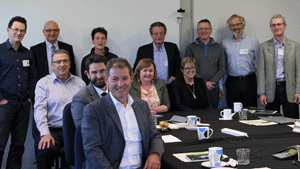 |
The new Minister for Research, Science and Innovation, the Hon Dr Megan Woods (centre, middle row), meeting with the IRANZ team at Lincoln Agritech.
|
IRANZ welcomes the Hon Dr Megan Woods as the new Minister for Research, Science and Innovation. In August, Dr Woods met with IRANZ members at a meeting held at Lincoln Agritech Ltd, where she foreshadowed R&D Tax Credits. A plan which she saw as likely to engender cultural shifts towards R&D in businesses and that would get a good uptake with SMEs. She reiterated the importance of Independent Research Organisations (IROs), saying that collaboration between industry and research organisations is important in any shift towards R&D by business.
MORE →
|
|
|
|
|
A number of Independent Research Organisations (IROs), offering research from the impact of household products on New Zealand’s aquatic ecosystems to developing nitrogen-fixing trees and grasses for our forestry and pastoral industries, have come out as winners in the Government’s latest funding round.
Two of Cawthron Institute’s research programmes were awarded funding of more than $20 million over five years. Two Lincoln Agritech research programmes will receive $8.2 million, and The New Zealand Winegrowers Research Centre based in Marlborough, has been awarded $9.3 million.
MORE →
|
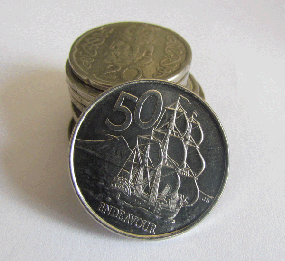
|
A number of Independent Research Organisations (IROs) have come out as winners in the recent Ministry of Business, Innovation and Employment (MBIE) 2017 Endeavour Round, with their proposals seen as world-leading science. Photo: Louise Thomas. |
|
|
|
|
|
|

|
Damage to CentrePort in Wellington following the November 2016 earthquake. Photo: Opus Research. |
|
There are approximately 15,500 road bridges in New Zealand. Around 18% of them were constructed prior to 1943, as is the case for much of the developed world, which means they weren’t designed with the capacity to support High Productivity Motor Vehicles (HPMVs) weighing over 55 tonnes, without some form of strengthening. In 2014, Opus Research and Opus bridge engineers contemplated a challenge being faced by the New Zealand Transport Agency, which planned to open State Highway 1 in the South Island to HPMVs but had concerns about the load capacity of the Rakaia River and Rangitata River Bridges. The Agency was potentially facing a >$10m bridge strengthening programme.
MORE →
|
|
|
|
|
|
IRANZ is pleased to welcome the Centre for Space Science Technology (CSST) as a member. CSST is the first of the new Regional Research Institutes to get off the ground. Based in Alexandra, the Centre for Space Science Technology (CSST) was established in June this year. They plan to build an agile company that can handle the entire Earth observation data life-cycle, from system design, data capture, data management, dissemination, through to training and support. CSST is owned by the Space Science Technology Trust and governed by an independent Board of Directors.
Steve Cotter, the CSST Chief Executive, met with IRANZ members at our meeting in November, where CSST was welcomed as a new IRANZ member.
|
| MORE → |
|
 |
|
A satellite's view of New Zealand. Image: CSST/NASA. |
|
|
|
|
|
CRL Energy and O’Kane Consultants researchers are gaining an international reputation for innovation in mine site environmental management, with collaboration or uptake of their processes now in the UK, Canada, and the USA. Waste mussel shell-based biogeochemical reactors are of particular interest, “We have been optimising and studying waste mussel shell bioreactors over the last few years in collaboration with the microbial genetics laboratory at the University of Windsor in Canada. These systems have been installed at full scale at two mine sites in New Zealand with a third system under construction and two more planned,” says CRL Energy’s South Island Group Manager, Dr James Pope.
MORE →
|
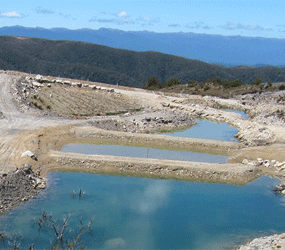
|
Mussel shell bioreactor (centre) at Stockton Mine on a spectacular day. Three hundred and twenty tonnes of shells treats two to three litres per second of pH3.2 water, changing it to around pH5 and removing dissolved metals as oxides, hydroxides and sulphides. Photo: CRL Energy. |
|
|
|
|
|
|

|
Professor Richard Bedford, President of the Royal Society of New Zealand, presents Dr Sarah Jefferies with her Doctor of Medicine (MD) degree. Sarah won the Fukuchi award for best Respirology paper in 2016 for her thesis on the effect of paracetamol in the treatment of influenza infection. Photo: MRINZ. |
|
Providing a base for specialist training in medical research is a key priority of the Medical Research Institute of New Zealand (MRINZ). In 2012, the New Zealand Qualifications Authority registered the MRINZ as a private training establishment, and in 2013 the Institute was accredited to award the Medical Doctorate (MD) research degree. On 2 November 2017, the MRINZ had its inaugural MD graduation ceremony, with three graduands being awarded an MD Degree.
This graduation was an important event for MRINZ, not only reflecting its position as an internationally recognised medical research institute, but also its strong track record in postgraduate medical training, primarily supervising doctors in PhDs at Victoria University in Wellington.
MORE →
|
|
|
|
|
|
The BBHTC National Science Challenge is a collaboration hosted by BRANZ and involving researchers from more than 20 research organisations and companies. It brings together a team that includes expertise in design, architecture, construction, planning, geography, behavioural sciences, economics and technology.
Research is structured around six themes or strategic research areas (SRAs). One of these SRAs is Transforming the Building Industry - a research collaboration between the University of Auckland, Auckland University of Technology, Victoria University of Wellington and BRANZ. Working with industry, it aims to generate ideas, methods, tools, techniques and approaches. These will contribute to transforming a conservative, constrained and fragmented building industry into one that is productive, innovative and fit for purpose to address 21st century challenges and opportunities. The end result should deliver quality, cost-effective buildings and associated services in places where they are needed and designed to meet the needs of New Zealand’s evolving, ageing, multi-cultural society.
In the following article, Dr Casimir Macgregor, a Senior Social Scientist at BRANZ, discusses the work to date on transforming the building industry.
|
| MORE → |
|
 |
|
A bold, 10-year government-backed research initiative will re-engineer how New Zealand’s built environment is delivered. Outcomes should be better housing, vibrant neighbourhoods and thriving towns and cities. Photo: BRANZ/MBIE
|
|
|
|
|
|
|
Two related OECD-ITF (International Transport Forum) Working Groups are currently keeping Dr John de Pont of TERNZ busy. John is a corresponding member of the Working Group on Intelligent Transport Systems (ITS) Applications for Heavy Goods Vehicles. This working group, which was initiated in February 2016, is reviewing the potential role of larger and heavier vehicles for coping with the projected growth in freight demand and how the impacts of these vehicles can be managed through ITS. John says their focus is on tools for monitoring, ensuring compliance, improving safety and minimising the impact on the infrastructure.
|
| MORE → |
|
 |
|
More freight being moved by fewer, safer trucks. Photo: TERNZ |
|
|
|
|
|
Two scientists from Independent Research Organisations (IROs), Professor Charles Eason from the Cawthron Institute and Professor Ian Woodhead from Lincoln Agritech, were medal recipients at this year’s New Zealand Research Honours, hosted by the Royal Society Te Apārangi and held at the Viaduct Events Centre in Auckland in October.
MORE →
|
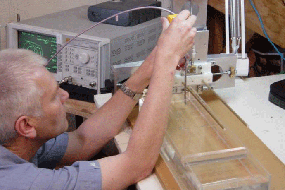
|
Professor Ian Woodhead, Lincoln Agritech, has been awarded the Scott Medal for advancing electronic engineering, particularly in developing sensors for the agricultural and environmental sectors, including an electric fence performance sensor, and an electronic soil moisture sensor that allows for more efficient irrigation systems. Photo: Lincoln Agritech. |
|
|
|
|
|
|

|
Dr Troy Coyle joins the HERA team as its new CEO from the beginning of next year. Photo: HERA. |
|
IRANZ welcomes Dr Troy Coyle as the new CEO of New Zealand's Heavy Engineering Research Association(HERA), and says farewell to Dr Wolfgang Scholz who is retiring. Wolfgang has been the HERA Director for 17 years, and before that was Manager of the New Zealand Welding Centre at HERA.
MORE →
|
|
|
|
|
|
Scientists are set to research the application of transformational tech for the aquaculture industry, following funding approval for a two-year Precision Farming Technology for Aquaculture project. "The aquaculture industry aims to reach $1 billion in sales by 2025. Technology that promotes sustainability, efficiency, and the ability to farm further offshore will play a significant role in achieving this target," says project leader Dr Cornelisen, Cawthron Institute Coastal and Freshwater Group Manager.
The project brings together a collaborative team of researchers from Cawthron Institute, University of Auckland, Victoria University of Wellington, University of Canterbury, and the NZ Product Accelerator. An Industry Advisory Group will provide an invaluable contribution. The long-term vision is to establish New Zealand as a leader in hi-tech, aquaculture automation and remote farm intelligence.
|
|
MORE →
|
|
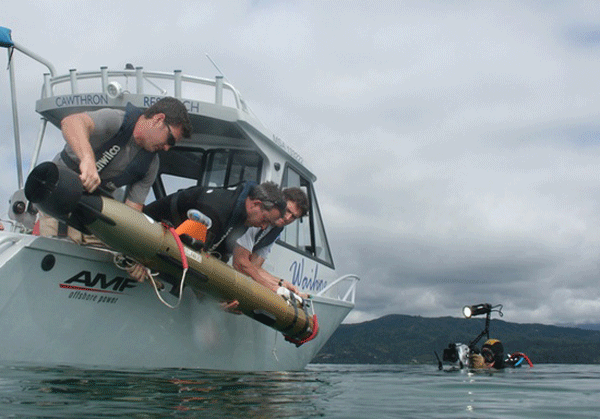 |
|
Using a robotic submarine to explore New Zealand mussel farms. Photo: Cawthron Institute. |
|
|
|
|
|
New Zealand’s 2017 election renewed debate about how emissions trading can support New Zealand’s transition to a successful low-emission economy.
To help explain how the New Zealand Emissions Trading Scheme (NZ ETS) works, Motu Economic and Public Policy Research has created seven short videos answering questions asked by students relating to climate change and the NZ ETS.
MORE →
|
|
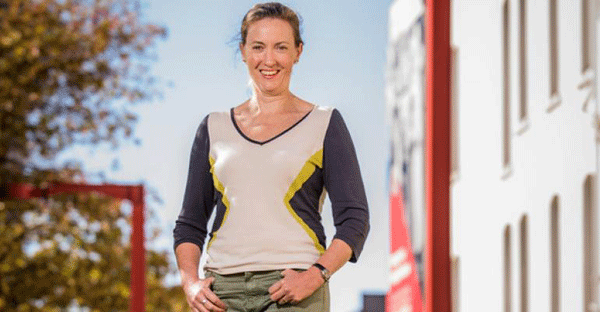 |
|
The videos star students from the Wellington region alongside Motu's Dr Suzi Kerr, an international emissions pricing expert and co-leader of the 2016 World Bank and International Carbon Action Partnership report 'Emissions Trading in Practice: A Handbook on Design and Implementation'. Photo: Motu.
|
|
|
|
|
|
|
|
WHO WE ARE
IRANZ is an association of independent research organisations. Its members undertake scientific research, development or technology transfer. Members include Aqualinc Research Ltd, BRANZ, Cawthron Institute, CRL Energy Ltd, Centre for Space Science Technology (CSST), Heavy Engineering Research Association (HERA), Leather & Shoe Research Association (LASRA), Lincoln Agritech Ltd, Medical Research Institute of New Zealand (MRINZ), Motu Economic and Public Policy Research, Opus Research, Titanium Industry Development Association Ltd (TiDA Ltd) and Transport Engineering Research NZ Ltd (TERNZ).
|
|
Contact: Dr Rob Whitney, Executive Officer, mobile: +64 27 2921050, email: information@iranz.org.nz
|
| Copyright © iranz |
|
|
|
|
|